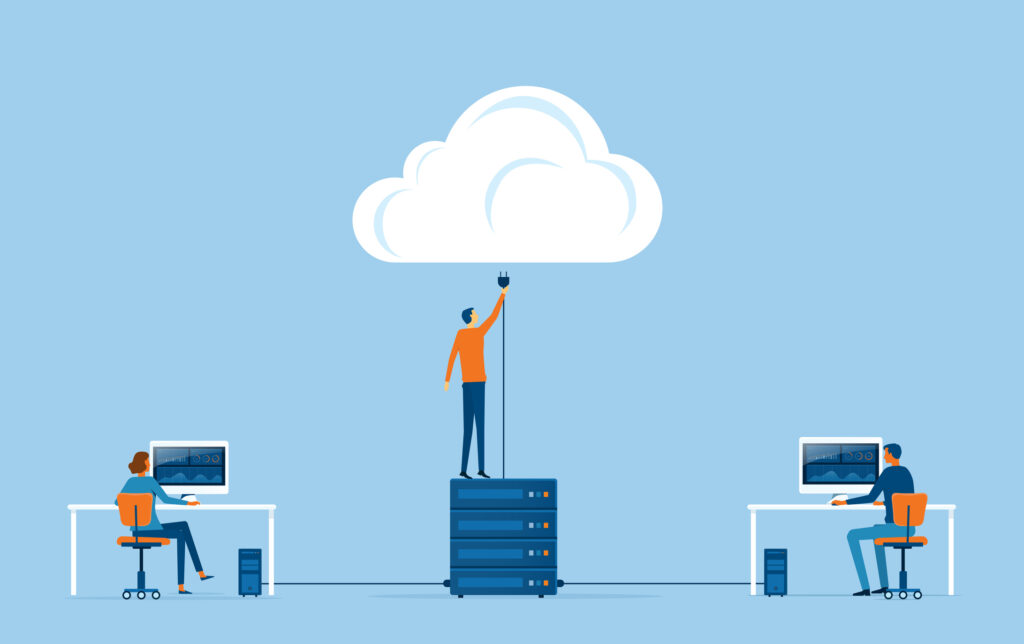Beyond Lift and Shift: Planning a Successful Cloud Migration
If you have ever undergone a family move to a new area, you understand the challenges involved. Moving is a tough endeavor, and most underestimate the effort required throughout the entire process. It usually proves more expensive than anticipated once all the associated costs are added up. Additionally, there are often regrets concerning the rushed nature of purchasing a new house without fully understanding the new area beforehand.
We use this analogy because moving to the cloud is quite similar. Moving things from point A to point B is rarely an inexpensive affair, especially when it comes to cloud migration. Like many things in life, the concept of a simple ‘lift and shift’ migration may sound appealing, but it rarely proves that easy. It doesn’t take long to realize that a ‘lift and shift’ often turns into refactoring and modernization, which requires a great amount of planning and expertise. In addition, there is often sticker shock when the first “cloud” bill arrives.
The True Benefits of Cloud Migrations
While cloud migrations can be complex, the end result can be highly beneficial. While there are many stories about organizations that have initially migrated to the cloud in pursuit of promised cost savings that never fully materialized, there are numerous proven benefits that drive the migration journey to the cloud:
- The cloud enables increased business agility and scalability by allowing companies to rapidly provision and scale resources up or down based on changing business needs, a capability that can be difficult to achieve with on-premises infrastructure.
- With data and applications in the cloud, employees can access them from anywhere, enabling improved mobility, remote work, collaboration, and business continuity.
- Migrating to the cloud allows organizations to offload maintenance of hardware, databases, and applications to the cloud provider, enabling IT teams to focus on more strategic initiatives for operational efficiency.
- Data replication across multiple cloud availability zones and regions provides resilience against localized outages or disasters impacting on-premises data centers, enabling business continuity and disaster recovery capabilities.
Cloud migration facilitates digital transformation by providing a scalable and agile foundation to modernize legacy applications, adopt cloud-native development, and leverage advanced cloud services like AI/ML and IoT. This is why leveraging the cloud, whenever possible, is crucial for nearly any business.
Understand that the Cloud is Different
When you rush into purchasing a new home in an unfamiliar area, you may not know things such as traffic patterns, proximity to shopping, zoning issues, and a host of other things. The first thing to understand is that the cloud is different than a traditional data center. Consider how much time you’ve spent learning the intricacies of your on-premises environment. It is going to take a while to understand the nuances of the cloud as well. Concepts like the “shared responsibility” model for security require thorough understanding. The cloud brings a new set of challenges you must be prepared for.
- Moving applications and data to the cloud can greatly expand the potential attack surface
- Ensuring compliance with industry regulations and standards in the cloud can be more challenging than anticipated.
- Moving applications to the cloud can introduce network latency issues, especially for applications with real-time or low latency requirements
- Migrating to the cloud often necessitates changes in processes, tools, and organizational culture, to adapt to a cloud-native mindset.
- The scope of auditing requirements expands significantly, as does the necessity to monitor and assess the security practices and compliance of cloud vendors.
By thoroughly assessing these potential challenges and planning accordingly, companies can better prepare for a smoother and more successful cloud migration journey while mitigating risks and maximizing the benefits of the cloud.
Understand the Cloud’s Limitations
The cloud cannot be everything for every application. Not everything can be optimally migrated to the cloud. While the cloud offers numerous benefits, there are instances in which certain applications, systems, or data may not be suitable for a complete cloud migration. Legacy applications, static workloads, or highly complex systems can be challenging to retrofit for the cloud environment. Although some cloud providers may cater to legacy systems, challenges can arise when data resides in one cloud while the application is hosted in another. In such cases, workarounds or hybrid solutions may be necessary to bridge the gap.
Enacting a Strategy is Essential
When planning a cloud migration, it’s crucial to design a strategy that aligns with your organization’s specific needs and requirements. Rather than attempting to force every aspect into the cloud, a thoughtful approach is to identify the workloads and applications that can truly benefit from the cloud’s scalability, agility, and cost-effectiveness. For those that cannot be easily migrated or optimized, on-premises or hybrid solutions may be more appropriate. The goal should be to strike the right balance between leveraging the cloud’s advantages while maintaining the necessary on-premises infrastructure for critical or inflexible systems.
Evolving Solutions has a comprehensive approach of how to work with cloud providers combined with a deep understanding of applications, affinity mapping, and identifying the best cloud providers for our client’s specific needs. We can help accelerate your cloud journey while mitigating risks to ensure timelines are met. Our experts can help you avoid common pitfalls and free up your resources to maintain day-to-day operations without being consumed by the migration process.
Moving isn’t fun, but Evolving Solutions can help ensure that your objectives are met throughout the migration process, enabling your business to unlock new opportunities and thrive.
